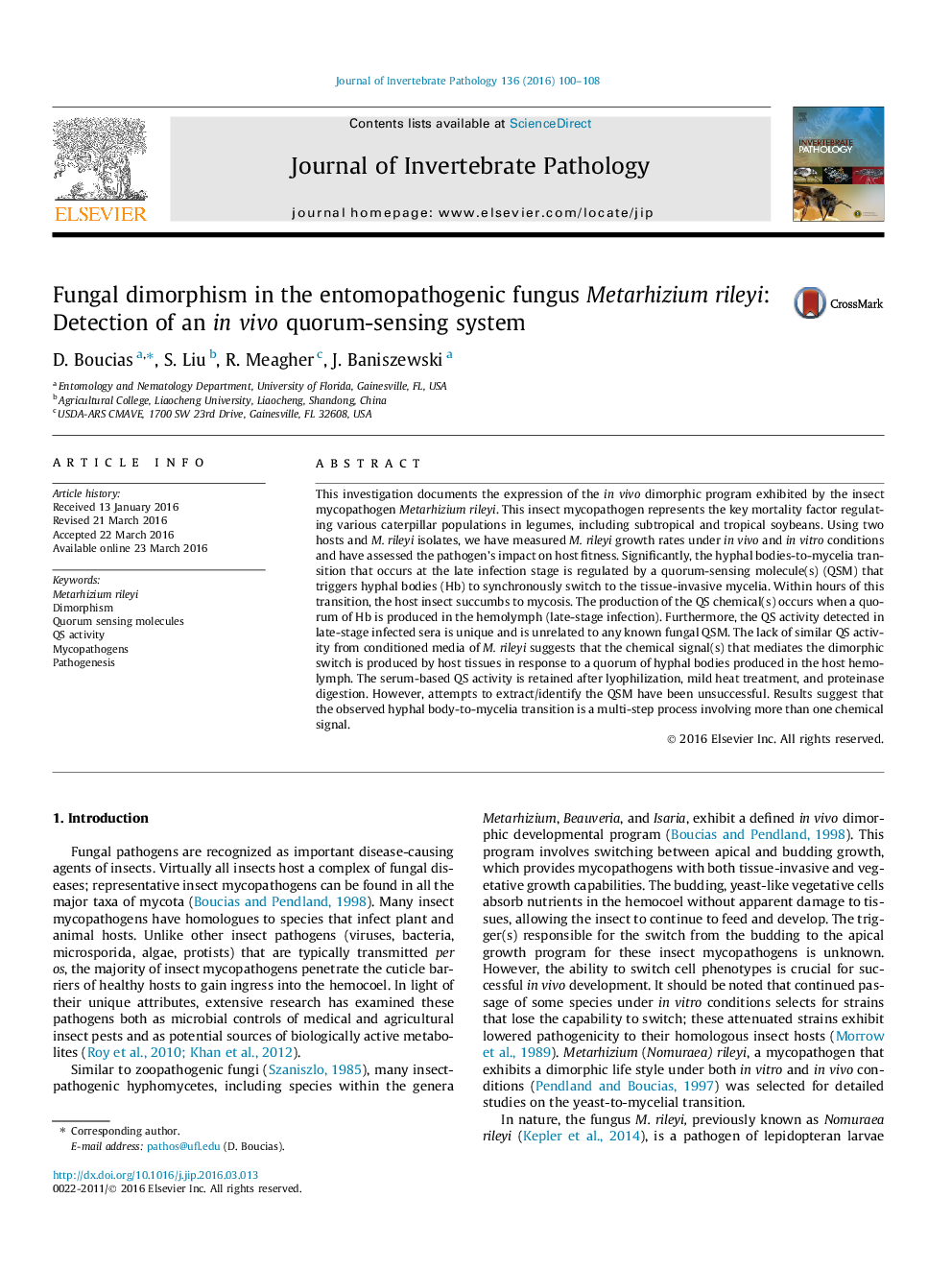| کد مقاله | کد نشریه | سال انتشار | مقاله انگلیسی | نسخه تمام متن |
|---|---|---|---|---|
| 4557587 | 1628216 | 2016 | 9 صفحه PDF | دانلود رایگان |

• Massive numbers of M. rileyi hyphal bodies are produced in the haemolymph of hosts.
• A quorum of hyphal bodies in vivo triggers a synchronous switch to a mycelia phenotype.
• Quorum sensing chemistries produced at late infection stage triggers a dimorphic switch.
This investigation documents the expression of the in vivo dimorphic program exhibited by the insect mycopathogen Metarhizium rileyi. This insect mycopathogen represents the key mortality factor regulating various caterpillar populations in legumes, including subtropical and tropical soybeans. Using two hosts and M. rileyi isolates, we have measured M. rileyi growth rates under in vivo and in vitro conditions and have assessed the pathogen’s impact on host fitness. Significantly, the hyphal bodies-to-mycelia transition that occurs at the late infection stage is regulated by a quorum-sensing molecule(s) (QSM) that triggers hyphal bodies (Hb) to synchronously switch to the tissue-invasive mycelia. Within hours of this transition, the host insect succumbs to mycosis. The production of the QS chemical(s) occurs when a quorum of Hb is produced in the hemolymph (late-stage infection). Furthermore, the QS activity detected in late-stage infected sera is unique and is unrelated to any known fungal QSM. The lack of similar QS activity from conditioned media of M. rileyi suggests that the chemical signal(s) that mediates the dimorphic switch is produced by host tissues in response to a quorum of hyphal bodies produced in the host hemolymph. The serum-based QS activity is retained after lyophilization, mild heat treatment, and proteinase digestion. However, attempts to extract/identify the QSM have been unsuccessful. Results suggest that the observed hyphal body-to-mycelia transition is a multi-step process involving more than one chemical signal.
Figure optionsDownload as PowerPoint slide
Journal: Journal of Invertebrate Pathology - Volume 136, May 2016, Pages 100–108